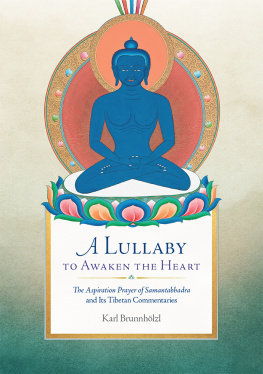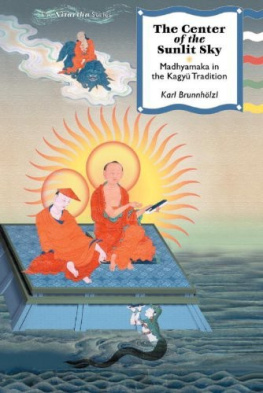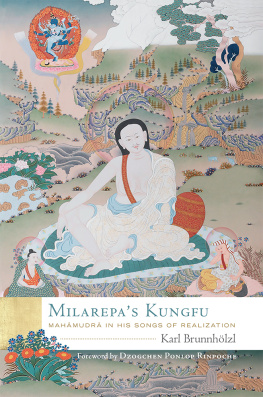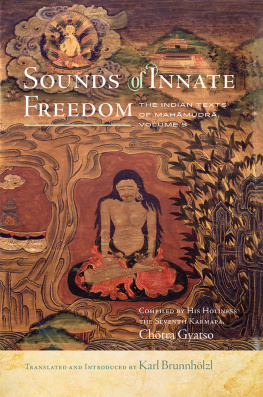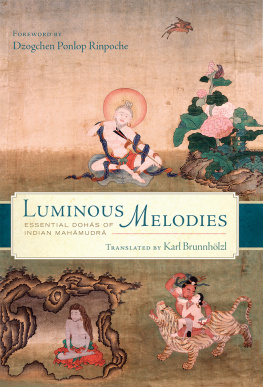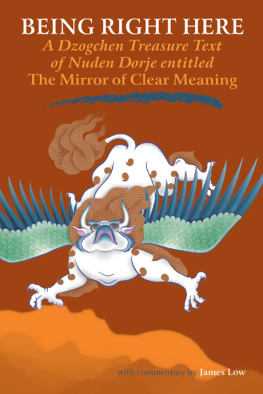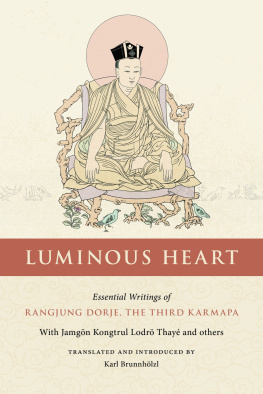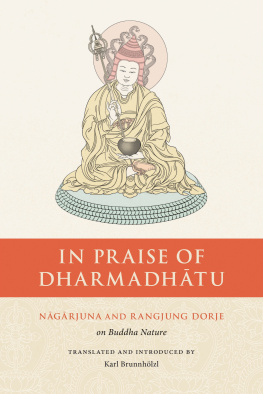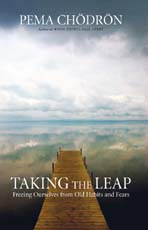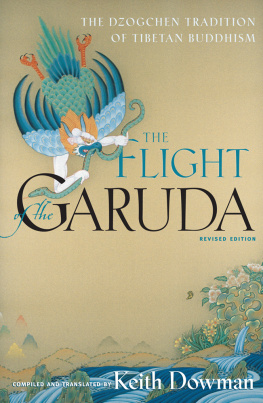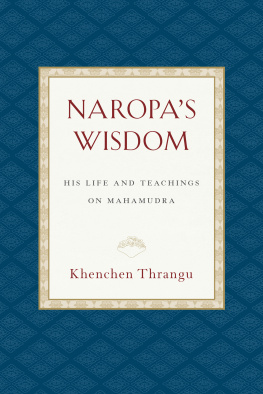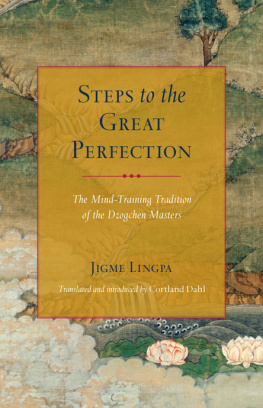
Publishers Acknowledgment

The publisher gratefully acknowledges the generous help of the Hershey Family Foundation in sponsoring the production of this book.
Acknowledgments

My sincere thanks go to Khenpo Tsltrim Gyamtso Rinpoche and Dzogchen Ponlop Rinpoche for their wealth of Dzogchen teachings transmitted through body, speech, mind, qualities, and activities. I am also grateful to the many Western scholars and practitioners who have contributed to our knowledge of the Great Perfection and whose work has supported the writing of this book.
If there is anything in this volume that sounds good, makes sense, and serves as an antidote to ignorance, confusion, and suffering, may it be relished as originating from realized masters and vastly learned scholars. Everything else, including all mistakes, can safely be said to be mine.
Sarva magalam.
Abbreviations

The Aspiration Prayer | TheAspiration Prayer of Samantabhadra |
BDRC | Buddhist Digital Resource Center (www.tbrc.org) |
CV | Common version of TheAspiration Prayer extracted from the Tantra of Samantabhadras Unobstructed Awakened Mind |
Ketaka | The Fifteenth Karmapas commentary on TheAspiration Prayer: A Commentary on the Meaning of The Aspiration Prayer of Samantabhadra Found in the Great Tantra of the Unobstructed Awakened Mind from the Northern Treasures, an Explanation Called Ketaka Lucidly Arrangedin the Form of a Few Glosses |
Lamp | Tsltrim Sangpos commentary on TheAspiration Prayer: An Exposition of The Aspiration Prayer of Samantabhadra Found in the Great Tantra of the Unobstructed Awakened Mind from the Northern Treasures, Called The Lamp That Clearly Illuminates the Short Path of Samantabhadra |
Lancet | Jigm Lingpas commentary on TheAspiration Prayer: Clearing the Guideto The Aspiration Prayer of Samantabhadra with the Lancet ofa k |
RTV | The version of TheAspirationPrayer in the Treasury of Precious Treasures (Rgod kyi ldem phru can dngos grub rgyal mtshan 199?) |
TOK | Jamgn Kongtrul Lodr Tays Treasury of Knowledge (Kong sprul blo gros mtha yas 1982) |
TV1 | The version of TheAspiration Prayer contained in the Tantra of Samantabhadras Unobstructed Awakened Mind (Rgod kyi ldem phru can dngos grub rgyal mtshan 1973b) |
TV2 | The version of TheAspiration Prayer contained in the Tantra of Samantabhadras Unobstructed Awakened Mind (Rgod kyi ldem phru can dngos grub rgyal mtshan 2015) |
Preface

The Aspiration Prayer of Samantabhadra, one of the most famous and often-recited Dzogchen texts, is a uniquely profound prayer with two distinct levels of meaning, and it also serves as an on-the-spot practice instruction. On its surface, this is a prayer offered by the primordial buddha, Samantabhadra, who aspires that all sentient beings may recognize the true nature of their minds as self-arising awareness, thereby becoming buddhas. Actually, however, this aspiration is made by this very same nature of the mindprimordial basic awareness, or rigpa, which is referred to as Samantabhadrain order to recognize itself, which is nothing other than the ultimate awakening of buddhahood. Thus, it is a wake-up call by our own buddha nature to be revealed as it is, by way of seeing through its adventitious, fleeting obscurations. The prayer not only outlines the profound view of Dzogchen in a nutshell but also provides clear instructions on how to discover the five wisdoms of a buddha in the very midst of the five main mental afflictions.
To give a brief overview of the structure and contents of this book, the first part begins by addressing the question of who or what Samantabhadra in the tradition of the Great Perfection is, what he teaches, and what his instantaneous freedom consists of. This is followed by an elucidation of five aspects or meanings of Samantabhadra in different contexts by Longchen Rabjampa Trim ser (130864), as well as of the iconography and symbolism of both Samantabhadra and Samantabhadr.
The second part of the book conducts a detailed examination of the background, context, and nature of TheAspiration Prayer of Samantabhadra, beginning with its source, the scriptural collection called the Northern Treasures. After a general presentation of the nature and functions of aspiration prayers in Buddhism, we explore the unique character of TheAspiration Prayer of Samantabhadra, its nonreferential and nondual language, its structure, and the textual versions available to us. This part concludes with an explanation of TheAspiration Prayer as a meditative practice and an overview of the three extant Tibetan commentaries.
The third part consists of three translations of TheAspiration Prayer based on different versions of the text, as well as translations of its three Tibetan commentaries by Jigm Lingpa, the Fifteenth Karmapa, and Tsltrim Sangpo.
Among the appendices, the first one presents the outlines of the three Tibetan commentaries. The following appendices unpack the crucial elements of the view of the Great Perfection in terms of ground, path, and fruition, and serve as guides to the context and meanings of the technical terms and concepts in TheAspiration Prayer and its commentaries. These appendices include excerpts from Longchenpas Precious Treasury ofWords and Their Meanings (appendices 26) and Precious Treasury of the Supreme Yna (appendix 7), with support drawn from two commentaries on Jigm Lingpas Treasury of Precious Qualities by Ynten Gyatso (nineteenth century) and Kangyur Rinpoche (18971975) (appendices 2, 3, 6, and 7). Appendices 2 to 7 respectively explore the ground of the Great Perfection, its manifestations, and Samantabhadras freedom; the arising of delusion and the unchanging inherent purity of all sasric manifestations; how buddha nature and its pure qualities pervade all sentient beings; the distinctions between the all-ground and the dharmakya as well as between mind and wisdom; the five kyas and the five wisdoms; and the various notions of freedom in the Dzogchen teachings. Appendix 8 is a translation of Jigm Lingpas Aspiration Prayer for Ground, Path, and Fruition, and appendices 9 and 10 render two short texts by Patrul Rinpoche (180887) on the essential point of practiceall thoughts and afflictions being free in themselvesand on recognizing the five afflictions as the five wisdoms, respectively.
Next page
